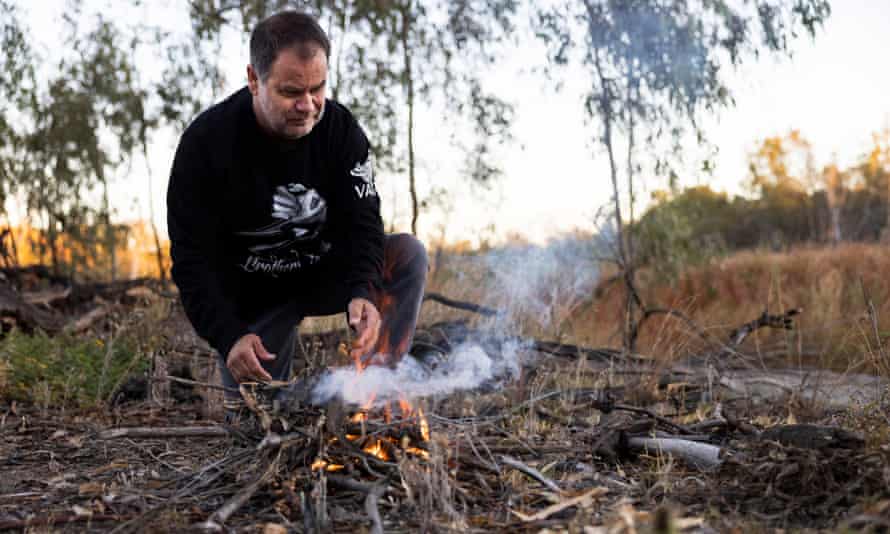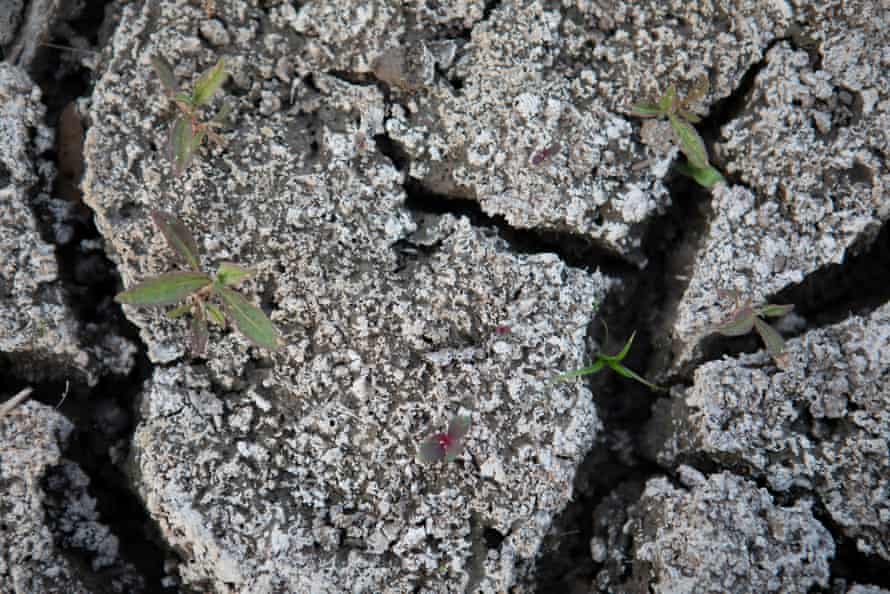Traditional owners in Murray-Darling Basin take fight for water rights to governments
Indigenous group seeking to restore Victorian wetland demands ‘cultural flows’ in case that could provide a template for others wanting water justice

Cultural flows, or water rights for First Nations communities, are one of the biggest unfulfilled promises of the Murray-Darling Basin plan.
But now a group of traditional owners has put together a detailed project to restore a culturally significant lagoon, and is demanding the federal and Victorian governments deliver meaningful, legal water rights to enable the project to go ahead.
If the calls are not heeded, the next step could be a Mabo-style case to force governments to deliver on cultural flows.
The concept of giving First Nations people a share of the water in the basin was enshrined in the Murray-Darling Basin plan almost two decades ago. In 2020 the federally funded cultural flows project reported on both the cultural and economic significance of flows.
Yet despite governments acknowledging cultural water in the plan, no rights have been allocated.
Like land rights, cultural flows are seen by Aboriginal people as an inherent right for traditional owners of the land around rivers.
The cultural flows project explained that cultural flows are “water entitlements that are legally and beneficially owned by Indigenous nations, of a sufficient and adequate quantity and quality to improve the spiritual, cultural, environmental, social and economic conditions of those Indigenous nations”.

In 2018 former federal minister David Littleproud agreed, after negotiations with Labor, to set aside $40m to buy water to be controlled and used by Indigenous communities along the river system.
But nothing substantive has happened. Earlier this year, the current water minister, Keith Pitt, suggested he might reallocate the money to other projects.
The Tati Tati traditional owners are taking a firm proposal to the government to ensure the delivery of an initial gigalitre of water at Margooya Lagoon, a culturally significant wetland near Robinvale in Victoria. That’s the equivalent of 444 Olympic swimming pools of water.
Until now, cultural flows have failed to become a reality, instead bogged down in arguments about legal frameworks, how water would be allocated and where the allocations should come from.
With the help of Environmental Justice Victoria, the Tati Tati have devised a demonstration project to take the fight to the Morrison government and the Victorian government to deliver on cultural flows in a meaningful and practical way.
Margooya Lagoon, or Tol Tol, is where Tati Tati ancestors were known to fish and camp. The area would, under natural conditions, flood annually at this time of year but has been almost completely dry for several years, adversely affecting the health of the wetland ecosystem, and subsequently the culture of the Tati Tati community.
“Murray River people are water people – our culture relies on healthy water flowing across Country naturally,” Tati Tati elder Brendan Kennedy said.

“The health of Margooya Lagoon has a direct impact and influence on the health of our people emotionally, spiritually, physically and culturally. When there’s no water there, it has a devastating effect on our people.”
In the Lower Darling, the Baaka have also talked about the devastating impact of having no flows on towns such as Wilcannia during the recent drought.
The Tati Tati have proposed a legal and policy package that will enable traditional owners authority over the management of that water on their Country, along with a cultural-flows management plan for the site that aims to restore healthy flows to Country and culture.
To date, no water from the Murray-Darling River system has been allocated to traditional owner groups in Victoria, despite extensive advocacy and consultation with government for more than two decades.
They are particularly perturbed by the Victorian government’s announcement that it will allocate 2bn litres of “additional” water savings from the Goulburn Murray Irrigation District Connection project to irrigators, with traditional owners missing out once again.
Tati Tati have undertaken Aboriginal waterway assessments at the site – a tool which helps traditional owners assess the cultural health of their Country and set priorities for water delivery.
If the model is successful it would provide a template for other First Nations communities seeking water justice across these over-extracted river systems.

Grant Rigney, a Ngarrindjeri man and chair of Murray Lower Darling River Indigenous nations, said this would be the first time the cultural flows concept had been rolled out in practice and was a critical milestone in achieving water justice for Indigenous nations in the Murray-Darling Basin.
“Establishing a cultural flows model at Margooya Lagoon will provide a template for other First Nations groups seeking water justice and create a ripple effect along the Murray-Darling Basin.”
Pitt said the government would seek consensus with Indigenous groups. “We continue to consult with peak Indigenous groups to finalise an agreement and seek consensus.”
Bruce Lindsay, a senior lawyer with Environmental Justice Australia, said colonisation and decades of mismanagement and over-extraction had left the Murray-Darling River system in a poor state and had an immense effect on Aboriginal people’s rights to healthy Country and culture.
He said “settler” law and policy was fragmented and complex and did not conform easily to Aboriginal lore and custom.
“One of the purposes of the cultural flows model is to produce a clearer reconciliation between the two,” Lindsay said. “There are legal and policy mechanisms available to deliver cultural flows, but they need to be put into practice.”
